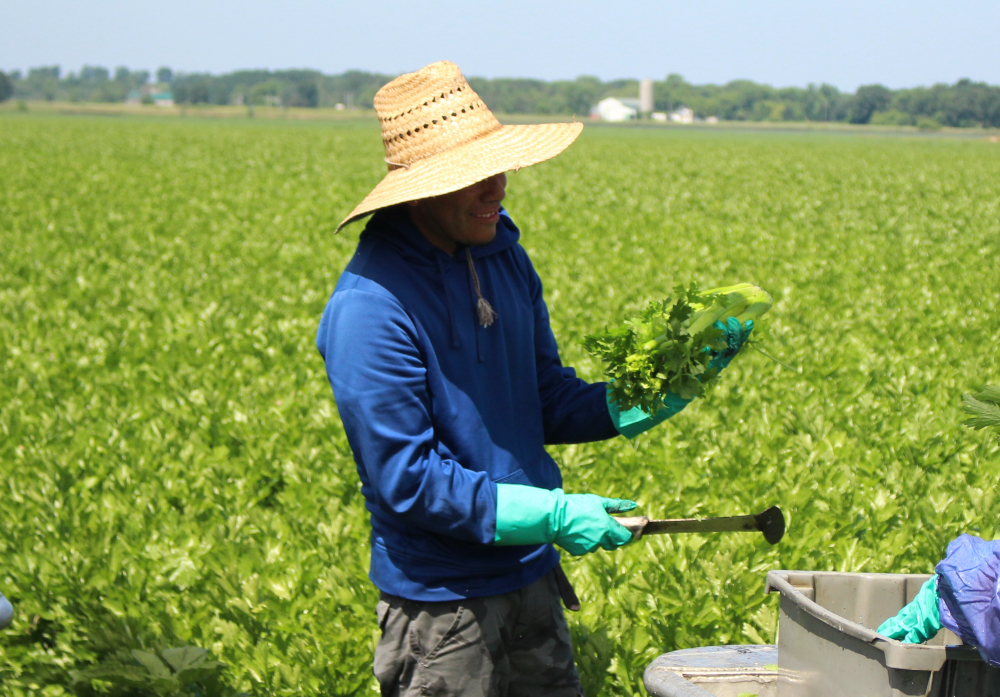
Oct 11, 2021A show of hands outlines US farm labor trends
As a recovering CPA, I am one of those people fascinated by numbers. Most farmers and ranchers, business operators to their core, share my fascination.
Early in August 2021, with no fanfare, the U.S. Department of Labor (DOL) published its National Agricultural Workers Survey (NAWS) for Fiscal Years 2017-2018. The report published every two years carried a date of March 2021, although only available to the public nearly six months after the report date.
This survey is unique in several respects, but the report itself is chock full of interesting information related to U. S. farmworkers. One of the unique aspects of this survey is that it is done in-person, and the interviewed workers are paid for their participation ($20, I believe). H-2A workers are excluded from the survey.
The DOL interviewed 2,586 crop workers for this iteration of its survey. Sixty-four percent of the farmworkers interviewed were born in Mexico, 32% were born in the U.S. or Puerto Rico, 3% were born in Central America and the rest were primarily from other areas of the Western Hemisphere. Seventy-seven percent of all farmworkers were Hispanic. Among U.S.-born farmworkers only 30% were Hispanic.
Sixty-three percent of the interviewed farmworkers in the survey were authorized to work in the United States. This percentage is important for policymakers in Washington, D.C., to understand. This means that 37% of the workers in 2017-2018 were not authorized to work in the United States. Consequently, as included in the efforts for ag labor reform in the House and Senate, these data support a legislative solution that not only addresses legal status for the existing workforce but also enhances the efficiency and applicability of a future flow H-2A visa program.
But there’s more.
Foreign-born workers who were interviewed had come to the U. S., on average, 22 years before the interview. Eighty-seven percent had been here at least 10 years. One percent of the farmworkers were in their first year in the U. S. Whereas historically, migrant farm labor traveled from job to job in the country, the survey found that 87% of the farmworkers were settled and only 13% were migrants in 2017-2018.
Perhaps not surprisingly, 69% of the farmworkers were males. The average age of the workers was 41, with 64% of the farmworkers over the age of 35. This aging workforce statistic is ominous for farmers and ranchers involved in labor-intensive agriculture and again makes the point of an urgent need for a functioning future flow visa program.
The report notes that 64% of farmworkers were most comfortable conversing in Spanish. The average level of education completed by the workers was the ninth grade with 35% of the interviewees reporting they had completed sixth grade or less.
Other data reflect the changing, less migratory patterns of agricultural labor in the U.S. Eleven percent of the farmworkers reported they lived on the farm where they worked, while 74% lived fewer than 25 miles from their job and 69% of workers drove to work.
Whereas most workers, 89%, were directly hired by growers, a trending item reflected that 11% were employed by farm labor contractors (FLC). The shift to FLC employment is likely to continue as grower sustainability is hampered by costs and international competition.
The seasonal nature of agricultural labor is also reflected in the results. Survey respondents averaged 35 weeks of ag labor at an average hourly wage of $12.32. The federal minimum wage is $7.25. Turnover in the workforce was slight as 81% of workers stayed with the same employer over the last 12 months.
And, in a slam at anti-farmer activists, farmworkers like their bosses. In fact, interviewees had been working for the same employer for an average of eight years and 80% indicated they expected to continue working on the farm for more than five years or as long as possible. And 31% of the farmworkers had at least one no-crop work job in the previous 12 months, ostensibly augmenting their on-farm earnings.
It takes many hands to feed America. The data included in this survey provides insight into whom the hands belong to and whom we should thank.
— Michael Marsh, president & CEO, National Council of Agricultural Employers














